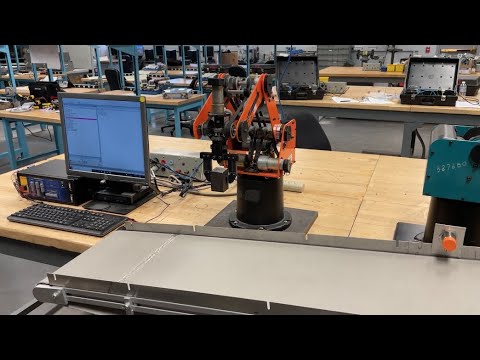Industrial Automation Robots have revolutionized the field of Mechatronics, Robotics, and Automation Engineering Technology. This exciting new field combines electrical and mechanical engineering principles to design and create advanced robotic systems that enhance efficiency and productivity in various industries. In this article, we will dive deep into the world of Industrial Automation Robots, exploring their functionalities, applications, and the impact they have on the industry.
Industrial Automation Robots are sophisticated machines that can perform tasks autonomously, with minimal human intervention. These robots are designed to handle various repetitive and labor-intensive tasks, enabling companies to streamline their production processes. They are equipped with sensors, actuators, and advanced programming capabilities, which allow them to perceive their environment, make decisions, and carry out complex tasks with precision and accuracy.
One of the key components of Industrial Automation Robots is mechatronics, which refers to the integration of mechanical and electronic systems to create advanced robotic systems. Mechatronics focuses on designing and developing robots that can perform tasks with a high degree of accuracy and reliability. It combines principles from various engineering disciplines such as mechanical engineering, electrical engineering, and computer science to create intelligent and efficient robotic systems.
The field of Mechatronics, Robotics, and Automation Engineering Technology offers a wide range of career opportunities. Technical engineers play a vital role in designing, building, and programming Industrial Automation Robots. These engineers are responsible for developing the mechanical, electrical, and software components of the robots, ensuring that they function optimally and meet the specific requirements of the industry.
Companies, both large and small, have recognized the immense potential of Industrial Automation Robots in enhancing productivity and reducing costs. These robots can be found in various industries, including manufacturing, logistics, healthcare, and agriculture. In manufacturing, for example, Industrial Automation Robots can perform tasks such as assembly, welding, and material handling, which were previously carried out by human workers. This not only speeds up the production process but also ensures a higher level of accuracy and consistency.
The adoption of Industrial Automation Robots has also resulted in increased safety in the workplace. These robots are designed to work in hazardous environments, such as mines or nuclear facilities, where human workers are at risk. By deploying robots in these environments, companies can minimize the potential for accidents and create a safer working environment for their employees.
However, it is essential to strike a balance between automation and human labor. While Industrial Automation Robots can handle repetitive and mundane tasks, they still require human oversight and intervention for more complex operations. Additionally, the integration of Industrial Automation Robots into existing systems can be a challenging task that requires advanced technical knowledge and expertise.
Looking to the future, the field of Mechatronics, Robotics, and Automation Engineering Technology is expected to witness significant advancements. Predictive analytics and artificial intelligence are likely to play a crucial role in enhancing the capabilities of Industrial Automation Robots. These robots will become even more intelligent and autonomous, capable of learning from their environment and making informed decisions.
In conclusion, the field of Mechatronics, Robotics, and Automation Engineering Technology is continuously evolving, driven by advancements in Industrial Automation Robots. These robots offer tremendous potential in enhancing productivity, efficiency, and safety in various industries. Technical engineers play a vital role in designing and developing these robots, ensuring that they meet the specific requirements of the industry. As we move forward, the integration of predictive analytics and artificial intelligence is likely to further enhance the capabilities of Industrial Automation Robots, making them an indispensable part of the workforce.
Industrial Robot
Exploring Mechatronics, Robotics & Automation Engineering Technology: An Insider’s View of Industrial Automation Robots


